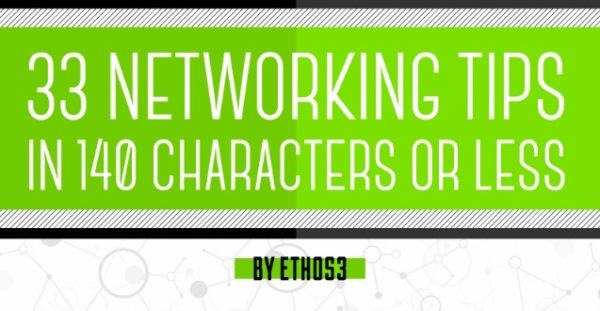Relationship management and networking: tips for professionals

Relationships and networks have traditionally been the commercial basis for business service providers. That is why it is remarkable how easily many accountancy, consultancy and law firms deal with this.
Many small offices leave relationship management entirely to the partners. Most accountants and lawyers, however, are not natural talents in establishing, maintaining and developing relationships! In addition, ignoring all non-partners is a huge missed opportunity. But the large offices also face the necessary challenges in the field of relationship management. For example, they often struggle with internal silos, and recording, unlocking and sharing information about relationships is often extremely difficult. So that should be better!
Relationship management is the third pillar of the commercial result of accountants, advisers and lawyers. Click here for more on these pillars.
Role for the professional and role for the organization
Effective relationship management has a role for both professionals and the organization. That is why I make a distinction between tips for individual partners and employees, and tips for directors / management and marketers (see figure).
In this blog I discuss the individual tips for partners and employees. Tips for directors / management and marketers are discussed in part 2. Click here to sign up.

1 Actively manage your relationships
Believe it or not, the majority of the professionals I meet have very little insight into his or her relationships. And of the minority that has this in order, a large part does not go much further than a kind of contact overview where there is in fact no 'active management'. And that while we all know how important relationships and networks are for your commercial success!
An important reason is that professionals are by nature mainly focused on content; they are crazy about their profession and are devoted to the assignments they are busy with. If you add the pressure on productive hours to this, you will understand why relationship management is quickly off the list!
How do you actively manage your relationships? Keep it simple!
The pressure on customer work will not decrease and you are - and remain - an accountant, advisor or lawyer - and not a sales manager. Here's how you can do it:
One-off
- Review all of your contacts and select the ones that (may) be commercially important to you. Dare to choose: these are the relationships you want to actively manage, so don't select 500 names! And remember that relationships that are not on the list are not suddenly gone; you're just not (yet) actively managing them (which you probably didn't do anyway!).
- Also make an export of your LinkedIn contacts (see below) and supplement your selected relationships with LinkedIn connections that are or may be commercially important to you.
- Then determine for the selected relations which action you want to take for which date. That could also simply be 'catching up'. Maintaining relationships can be done in many ways: by telephone, a personal appointment, an (email) message, via social media, etc. The most important thing is that you do not have lost contact with an important relationship for months (or years!).
- Also record other important information, such as that your relationship attended a seminar you gave or is interested in a service you spoke about.
How do I export my LinkedIn contacts:
- In LinkedIn go to 'My Network' / 'Connections'
- Click on the gear on the right ('Settings')
- Under 'Advanced Settings' (right) choose 'Export LinkedIn Connections'.
Weekly
- Open your overview of priority relationships and see which actions you should take (or should have taken) that week. Carry out the actions or - if that is not (yet) possible - adjust the desired action and / or deadline.
- Check whether you have made contacts (personal or online) in the past week that are or may be so important that you want to actively manage them. If so, add these contacts.
- Check whether there are contacts for which no actions are planned. If so, schedule it (even if it is in six months, the point is that these relationships do not go unnoticed).
Once per quarter
- Determine whether priority relationships from the list can or should be added.
- Make any changes not yet processed in the overview.
- Decide whether you want to take additional actions for (groups of) priority relationships (for example, invite to a drink or lunch meeting).
Track in a CRM system?
When you start working with your priority relationships, the question is of course how you record and keep up to date with this information. If your organization has an (adequate) CRM system, it is clear: there is a system and connecting with the rest of your organization naturally offers countless advantages.
If your organizations do not have a (workable) CRM system, keep track of your relationships. The best thing is to use a CRM system for this: this offers a lot of flexibility and makes it possible to export your data later if your organization implements a (different) CRM system.
It is not my practice to mention specific providers, but in this case I would like to point out Insightly. This CRM package (in a somewhat stripped-down version) is free for up to 2 users, and surprisingly versatile and user-friendly: ideal if you just want to try out how it works to work with a CRM system. For every CRM system, you have to work with it to experience the added value: what you don't put into it, doesn't come out either. And the more you work with it, the more opportunities and value you will discover.
Or just a list in Excel?
If you don't feel like delving into a CRM system, it is always much better to keep a contact list than to do nothing at all. And to manage your personal relationships, you can go a long way with a simple Excel file. Of course there are far fewer options than with a CRM system. For example, a spreadsheet is in principle one-dimensional, so that you basically have to link a contact to one organization, while you will know some relationships in multiple roles. You can start in Excel and - if you are ready - import this data into a CRM system.
To help you start managing your own relationships, we have created an Excel spreadsheet that allows you to easily keep track of the most important data and actions for your relationships. You can of course personalize fields, see open actions, filter by contacts in a specific sector, see where deadlines have passed, and so on. The file also contains a worksheet with some explanations on how to use and modify the list.

2 Maintain your network offline and online
Once you have determined which relationships you want to prioritize, the next question is: how?
Realize that relationship maintenance can take many forms: a personal (email or social media) message, a phone call, a lunch appointment or just drinking a cup of coffee together. Do not go offline or online, but combine different forms depending on the situation and your relationship. The most important thing is: personal attention, so whatever you do - make sure that it always fully matches the situation and interests of your relationship.
News-driven relationship maintenance
The best way to maintain your relationships is to respond to what is on their minds. Connect on LinkedIn with relations. Because you are 'connected', you stay informed about what is happening in their world and what interests them. Respond and act on relevant messages or developments. For example, by responding to a (social media) message from your relationship, or by proactively sending your relationship a message about something you have heard or read that is relevant to your relationship. By showing that you really pay attention to the other person and spontaneously come up with ideas or information, a relationship of trust is created and you come (or stay) top-of-mind with your relationship.
In addition, your contacts in the offline world are of course an important source of information. Remember or record important events, for example, when you hear that your relationship is about to give an important talk or that his or her son is about to graduate. And inquire about this later. Some people do things like this naturally, others need tools to think about them. If you belong to the last category, such an Excel list is a solution!
New relationships
This blog focuses on existing relationships, but many of the techniques discussed here can also be used to build new relationships. For example, you can follow a number of people with whom you would like to build a relationship on LinkedIn. You can do this by clicking the check mark to the right of 'Connect' in his or her LinkedIn profile and choosing 'Follow'. If you use contact Twitter or other social media, it is of course even better to follow him or her there. My personal experience, however, is that LinkedIn's effectiveness for business service providers is greatest.
In this way you will discover naturally what concerns them. The moment such a relationship posts something where you have a relevant opinion, insight or tip, you can post it as a Comment, so that you immediately come into view of that person. You can then propose to 'connect' at a suitable time. From that moment on, the intended relationship will also see your updates, making the step smaller to meet each other again.

One of the most effective ways to connect with people you don't know yet is through common relationships: you can see on LinkedIn who knows the person in your relationship network and ask them to introduce you. That way you can 'enter warmly' with someone you've never met. The strength of your second degree network cannot be underestimated.
Systematic relationship maintenance
If you only maintain contact on an ad hoc basis, you risk letting the relationship with important people cool down - or even disappear. You should therefore also use the list of actions for priority relations discussed earlier. By determining when you reconnect for each of your priority relationships, you ensure that warm contacts don't get cold and you increase the chance that the other person thinks of you the moment he or she comes across things in your field.
Of course, adjust your desired next steps if you have also had contact with someone on an ad hoc basis; it is not a straitjacket but a tool to keep an overview.
3 Selectively attend meetings and events
Until now I have mainly talked about managing and strengthening individual relationships. When you think of relations and networks, you also think of network meetings and other places where you find many people in the same place around the same subject at the same time. That makes such meetings very attractive, of course: in the same time when you can otherwise meet one relationship, you can easily speak or meet about ten people during an event.

Why selectively?
Attending meetings and events is generally a very expensive, time-consuming way to strengthen relationships. First of all, it takes a lot of time. Add it up: travel to it, park, the drink beforehand, the meeting, then of course the drink and then the return trip. That it takes time is no problem, if it also yields a lot. That is precisely the problem:
- Most meetings attract a mix of people who all have their own goals. Often only a relatively small part is interesting for you. However, you cannot see this remotely, so there is a good chance that you will get into a conversation with someone who does not fit within your target group. However, it is inappropriate to immediately look further, so that the coffee or drink time expires without you talking to people you would like to meet.
- Because everyone's time is scarce, organizations are less and less inclined to go to physical meetings and - if they do - they often don't send the decision-makers. This makes it even more difficult to get sufficient returns from such meetings.
“In my work with professional services firms, I have regularly experienced that accountants, advisers and lawyers attending an event only talk to each other. That is undoubtedly very pleasant, but it is of course not conducive to the commercial return of such a visit! ”
Almost all knowledge is available online these days, so the main reason for going to a meeting is that you can meet people in person. What I wanted to say before this is not that you no longer have to attend meetings. My point is that you have to be very selective in this, because attending a meeting is generally a very expensive way of maintaining relationships and networking.
The larger the proportion of visitors that fits within your target group and the more limited the time required, the more interesting the event. With this in mind, screen the list of options and only go to the most relevant meetings.
And don't forget the online networks: many sectors and professional groups have active online communities: find out which ones are there and choose the most interesting ones. The following also applies: be selective, because it is important that you actively participate in such a community.
In addition, there is a role for your organization to organize meetings where the right target group does come. More about this in my next blog, in which the role of directors / management and marketing is central.
Networking tips
And if you are at such a networking event: how do you go about it? It would be going too far to go into this in detail in this blog. Kaitlyn Russell has on themuse.com whopping 33 practical network tips brought together from various sources.

My most important tip: go to bring networks, not to fetch; what you give you will get back. And spend most of your time and energy on your priority relationships.
What are your experiences with relationship development and networking? Comments are welcome!

